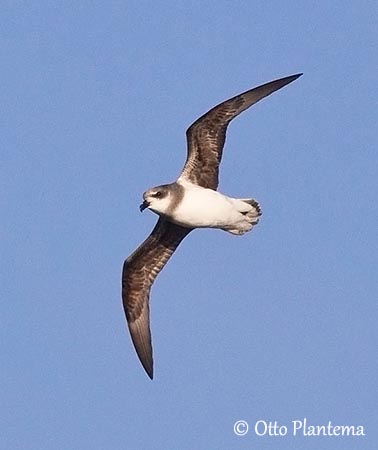
Fr: Pétrel soyeux
Ang: Soft-plumaged Petrel
All: Weichfeder-Sturmvogel
Esp: Petrel Suave
Ita: Petrello dal piumaggio morbido
Nd: Donsstormvogel
Sd: Sammetspetrell
Photographers:
Otto Plantema
Trips around the world
Alan & Ann Tate
AA Bird Photography
Text by Nicole Bouglouan
Sources:
HANDBOOK OF THE BIRDS OF THE WORLD vol 1 by Josep del Hoyo-Andrew Elliot-Jordi Sargatal - Lynx Edicions - ISBN: 8487334105
A Complete Guide to Antarctic Wildlife by Hadoram Shirihai and Illustrated by Brett Jarrett - Edited by Guy M. Kirwan - ALUL.A Press Oy, Finland - ISBN 9519894705
BirdLife International (BirdLife International)
Department of Sustainability, Environment, Water, Population and Communities
New Zealand birds and birding (Narena Olliver)
Soft-plumaged Petrel
Pterodroma mollis
Procellariiformes Order – Procellariidae Family
INTRODUCTION:
The Soft-plumaged Petrel is a medium-sized petrel included in the gadfly-petrels’ group. This species occurs in the Southern Ocean and breeds on several subantarctic islands.
This is a monotypic species, but the taxonomy of some potential subspecies is currently unresolved.
Predators such as mice, rats and cats are still present on some islands, and are the main threat during the breeding season, but the population is currently stable.

DESCRIPTION OF THE BIRD:
Biometrics:
Length: 35 cm
Wingspan: 83-95 cm
Weight: 250-380 g
The adult has brownish-grey upperparts from head to tail, with a dark, variable, M-shaped pattern across upperparts and upperwings. Usually, the upperwings appear darker. The tail is often paler on outer rectrices.
The underparts are white, including chin and throat. We can see a variable conspicuous grey breast band. The underwing may show sometimes an indistinct greyish wash at base of primaries, but it usually appears rather dark greyish and fairly uniform.
The head is dark grey with conspicuous white cheeks, chin and throat. The grey forehead is speckled white. We can see a prominent blackish eye patch contrasting with the whitish sides of the forehead.
The bill is black. The eyes are blackish. Legs and webbed feet are pinkish with dark tips to toes.
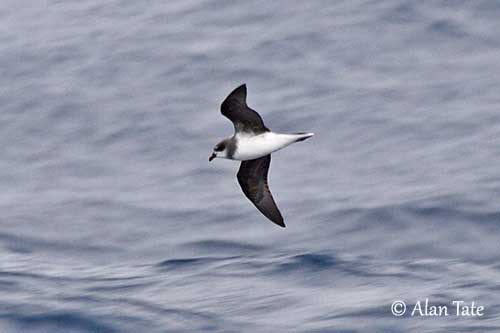
There is a rare dark morph with all-dark underparts varying from dusky-brown to sooty-grey, and a variable breast band.
Both adults are similar.
The juvenile resembles adult but it has indistinct paler mottling on upperwing-coverts and mantle during the first year.
RANGE:
The Soft-plumaged Petrel is found in Southern Ocean. It breeds on several subantarctic islands such as Tristan da Cunha and Gough Island, Prince Edward, Crozet, Kerguelen and Amsterdam Islands, and Antipodes Island, SE of New Zealand. From some recent records, this species also breeds on Maatsuyker Island, off S Tasmania.
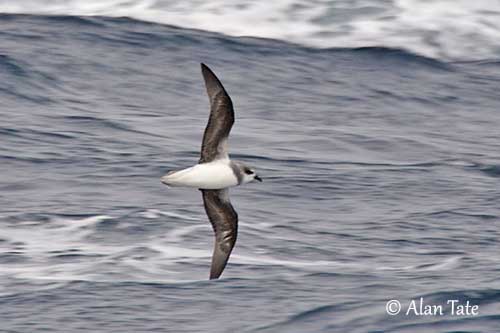
HABITAT:
The Soft-plumaged Petrel is marine and highly pelagic. It comes to land only for breeding in colonies established on steep slopes among rocks, tussock grass and ferns, and in lava fields depending on the island. The colonies are often in coastal areas, or occasionally inland.
CALLS AND SONGS: SOUNDS BY XENO-CANTO
The Soft-plumaged Petrel is usually silent at sea, but it becomes more vocal at night at colonies. It gives a repeated, low-pitched, musical wail with variable frequency, and interspersed by shrill squeaks. While in flight and during the aerial displays, it gives moaning cries “tree-pee” or shriller “uuuuuu-hi” usually repeated 2-4 times.
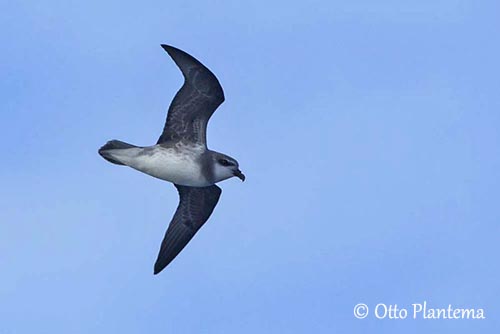
BEHAVIOUR IN THE WILD:
The Soft-plumaged Petrel feeds mainly on cephalopods of various species, but it also consumes some fish and crustaceans caught by surface-seizing. The preys vary depending on the area. It may occasionally follow ships and cetaceans.
There are often seen in small groups flying fast and low over the sea surface.
The Soft-plumaged Petrel is probably monogamous with long-term pair-bonds. The birds return to the colonies between August and October. They perform a pre-laying exodus during one month, and they often wander far from their breeding grounds. They are nocturnal at colonies were they nest in self-excavated burrows.
The birds perform aerial courtship displays accompanied by calls. Both mates engage in series of aerial chases, high-speed swoops and other elaborate figures while uttering loud, shrill calls “uuuuuu-hi”.
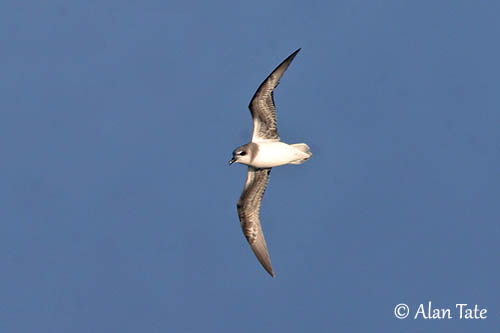
The movements of the Soft-plumaged Petrel are poorly documented. During the non-breeding season, they are usually widespread in subantarctic waters in winter and summer.
However, the general movement from the breeding grounds appears to be north.
In moderate to strong winds, the Soft-plumaged Petrel makes low arcs with short glides and some zigzagging flight pattern. It flies fast, low over the sea surface, and may perform intermittently wheeling up into the air. It flies with rapid wingbeats and much gliding.

REPRODUCTION OF THIS SPECIES:
The breeding season starts usually in September. Once returned to the colonies, the Soft-plumaged Petrel performs a pre-laying exodus of 4-5 weeks. The egg-laying period may vary according to the islands.
It nests in colonies established in coastal areas among tussock grass and ferns or rocks, on steep slopes.
The self-excavated burrow ranges between 60 and 280 centimetres long, and is often occupied by two pairs.
The female lays a single white egg. Both adults incubate during 50 days in shifts of about 10 days for the male, and one week for the female.
At hatching, the chick has grey down overall. It is fed by regurgitation by both parents, but mainly at night. It fledges about 3 months after hatching.

PROTECTION / THREATS / STATUS:
The Soft-plumaged Petrel is still threatened by introduced predators such as mice, rats and cats on some breeding islands, with in addition the predation by skuas. Predation occurs mainly on Marion, Crozet and Kerguelen Islands.
Habitat destruction due to erosion caused by fur seals at colonies is another problem.
However, in spite of these threats, this species has stable population estimated at least at 5,000,000 individuals in 2004.
The Soft-plumaged Petrel is currently evaluated as Least Concern.
